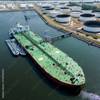Seasonality Impacts Chemical Tanker Market
The chemical tanker earnings for the third quarter of 2019 was impacted by the usual seasonal slowdown in volumes while rates remained stable, said Odfjell Group.
According to the company specializing in worldwide seaborne transportation and storage of chemicals and other specialty bulk liquids,spot rates were stable to slightly stronger on the front haul routes but strong competition and seasonally lower volumes on the back-haul routes had a negative impact on the overall market.
A high share of plant turnarounds and the attacks on oil installations in Saudi Arabia disrupted feedstock for chemical plants and refineries in September, and led to a slower recovery after the summer slowdown than normal.
The global chemical tanker orderbook stands at 8.3% of the current fleet. The global deep-sea fleet based on vessels larger than 18,000 dwt grew by 8 vessels in 3Q19 as 8 vessels were delivered, and zero vessels were scrapped. There were zero new orders for core chemical tankers concluded during the quarter.
Geopolitical tensions accelerated in the Middle East this quarter, a major export area for liquid chemicals. The situation culminated with an attack on oil installations in Saudi Arabia and also US sanctions on vessels controlled by affiliates of COSCO, an owner of a large fleet of crude and product tankers.
As a consequence, freight rates for crude and product tankers has improved. Supply & demand fundamentals for the larger tanker segments were already improving, and is also expected to remain stronger going forward.
"We expect this to reduce competition from swing tonnage and positively impact supply within the chemical tanker market," Odfjell said.
Net fleet growth for the chemical tanker orderbook (core & swing) is projected to 1.4% for 2020 before adjusting for potential impact from reduced swing tonnage and slippage.
"We forecast chemical tanker supply growth of 1.5 % and chemical tanker demand of 5% on average per year through 2021," Odfjell concluded.













